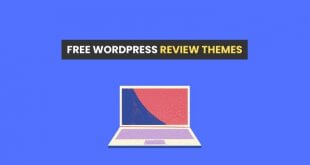Hey guys, today in this article, we are going to discuss the 14 skills and tools for effective web design. So keep reading.
An effective web design is a multi-layered puzzle. Each component fits with the other components flawlessly, creating a comprehensive experience that brings valuable information and entertainment to an eager audience.
Getting the perfect web design is also a multi-tiered puzzle. Without each piece working with every other piece, the result is a hodgepodge of confusion. When the designer has the skills and tools necessary for effective web design, you get that puzzle mentioned above.
Here are some vital skills every effective web designer has at their disposal as needed. So without wasting any more time, let’s start our topic is 14 skills and tools for effective web design.
Professional Skills
The following are the most important professional skills web designers must have to be able to create an effective website.
Sense of Design
A web designer must understand the technical part of web design, but they also must have a strong sense of flow, imagery, balance, proportion, etc., or all they will be able to design is basic sites with little functionality. The website will be technically correct, but it will not have the appeal necessary to convince users to explore more deeply what the site offers.
As importantly, a web designer must be able to take those principles and apply them to create symmetry across the website that keeps people’s interest.
UX Design
User experience design, or UX design, is how the average user reacts to using a website. If the site is clunky, they might be anxious or irritated. If the site flows naturally and is intuitive, they will have an enjoyable time and spend more time on the site. To get a cohesive and fun UX, the designer must understand how the website “unfolds.”
For example, are the menus and subsequent pages intuitive, or is every page a revelation to a new user? Is the site easy to navigate, and can users get the information they want quickly and easily? Both are quickly discovered using sitemaps and testing the experience as a user navigates through the site.
Understanding how users behave can help the designer create a site that feels natural and unfolds logically.
Mobile Design
Almost everyone now surfs the web on their smartphones at least part of the time. The degree to which the smartphone has supplanted PCs and laptops depends on the user’s age. The younger a person is, the more time they navigate the online world via their phones. Even “older folks” use their phones for many online functions.
Every website must be mobile-friendly and should have an associated app. A designer must incorporate responsive web design strategies to account for additional mobile use for all ages. Not doing so makes the experience of looking at a website on a smartphone difficult. It also can kill user enthusiasm to explore the site.
Graphic Design
Graphic design skills and experience are important for any web design team. If a website looks awful, no one will spend time on it. At the very least, understanding graphic design basics and how they work together to create a functional, visual user experience is extremely important when laying out a web design and evaluating the finished product.
A web designer does not have to be a graphic designer. They must, however, understand how alignment, contrast, balance, hierarchy, etc., work together in the things we see. Web designers must also understand why some designs are visually appealing, why others are not and why some make the user avoid a website or spend little time on it.
Customer Principles
Every successful website is based on a set of core customer principles, regardless of why the website exists or how it looks. Here are essential customer principles:
Three Clicks
Everything must be available within three clicks. More than three clicks will cause customer attention to drift. This is the website equivalent to the 8-second rule in marketing.
A Logical Hierarchy
Every page must logically flow with the page above it. The hierarchy must follow a logical progression a customer will take to get to a certain part of the website. Incongruous pages will frustrate customers and drive them away.
Prompt An Action
Every website page must have an action the customer can take as part of their visit. Engaging the customer is paramount, even if the engagement in question is only to investigate another page on the site.
Build A Relationship
As with any branding, you must build a relationship with your customers to keep them on as customers. Your content, customer service, products, or services must work together to hook and keep a customer.
Technical Skills
These are the technical expertise your web designers need to create the best website possible. Without these skills, the website will lack critical elements to help it function smoothly.
HTML
At least a website designer should know the basics of HTML. Knowing it will help with page creation as well as editing. The designer should understand how HTML affects everything from color schemes to site functions.
CSS
CSS is another foundational block of a website. It helps form the style of the site and pages. Skilled website designers will understand how that works and works with HTML to create the website’s visual appearance.
Web Server Management
Understanding how the web server works lets the website designer plan for responses to outages, when to perform larger updates to the website and how the website might be affected by different hardware and software.
JavaScript
JavaScript is another skill that website designers will benefit from, but it is not imperative. Understanding JavaScript is helpful when troubleshooting and in the planning phases of the website.
Auxiliary Skills
These skills are not directly related to website design, but they go a long way towards helping the skills above be used to their potential. They are also good skills if the website designer wants to move into management in the future.
Search Engine Optimization (SEO)
Increasingly, SEO is driving web content. If you are building a website, it is almost a requirement to include SEO in some capacity to drive the website higher in any search engine results. Understanding how SEO works allow the web designer to build the site around the most important content.
People Skills
IT personnel have honed a reputation since the 1950s of being extremely smart, technically competent, and socially inept. If you work in IT, you know it is true. You have heard the jokes.
Successful sitcoms have focused on the social awkwardness of IT personnel. Every television crime drama seems to have at least one brilliant IT guy who can barely carry on a conversation but will solve the crime with some technical wizardry.
Fair or not, the perception is that web and software designers and developers are gifted but not in the art of personal communications.
That reality elevates the ability to relate to people and communicate engagingly from “highly desirable” to “worth its weight in gold” status when interacting with non-technical people. Possessing people and communications skills is extremely important if a website designer plans to enter a management role.
Customer Service
Customer service is closely related to people skills but is slightly different. The two work together: You cannot have bad people skills and be very effective at customer service. Part of the job of a website designer is to win over customers to a proposed concept or site layout. Additionally, much of the work of a web designer in customer service is on the backend.
When a website needs modification, troubleshooting, or redesign, being able to communicate with customers is an intangible skill that makes the work of designing a website much easier. If the designer can connect with a customer, getting on the same page regarding pleasing the customer becomes much easier.
Time Management
In every aspect of web management, time is of the essence. The longer a website is ineffective, outdated, broken, or dysfunctional, the more the benefit potential of the website is diminished. In many cases, the website’s design is what makes a company, product, or service successful. That makes timely delivery vitally important.
If a designer takes an extremely long time, an opportunity is lost, and clients get anxious. If a designer misses a deadline, a project gets held up, costs increase, and pressure builds on the other employees involved in a project. A designer that can manage their time effectively will inevitably be more successful than one who cannot.
Prioritization
Every job has tiers, and within those tiers, priorities exist. If a customer desperately needs a payment page on their website to collect revenue, worrying about the color scheme is focusing on the wrong aspect of that job. Designing and loading a skeleton page that can process payments is the priority. Figuring out the color scheme is a secondary consideration at best.
Prioritization is vital for a website designer to master. Not only will it help their workflow more smoothly, but it will save money and open the door to potential revenue. A website designer can ensure their contribution is valuable by getting the most important work done and then moving to less important projects.
Final Thoughts
These skills and tools are invaluable for those looking to master effective UX design. Without them, the job of the designer becomes much more difficult. Even difficult design projects will flow more smoothly with them, and the final product will be more effective. I hope you like this article on the 14 skills and tools for effective web design.
 free html design Free html design templates
free html design Free html design templates






